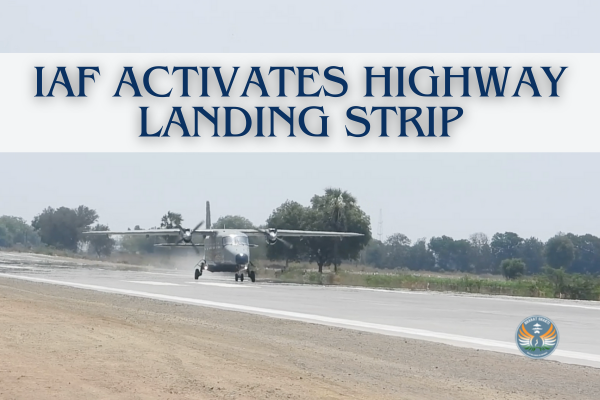On 18th March 2024, the Indian Air Force (IAF) successfully demonstrated their collaboration with civil agencies like the National Highways Authority of India (NHAI), district administration, and state police, in conducting an Emergency Landing Facility (ELF) airstrip activation on National Highway 16 near Addanki, Bapatla district, Andhra Pradesh. This event showcased the strong synergy between the IAF and civil agencies.
.@IAF_MCC fighter & transport aircraft carried out operations on an Emergency Landing Facility (ELF) airstrip on NH-16.@nitingokhale @RRaviishankarr @CaptDKS @skchatts #IAF pic.twitter.com/lay1gHnnCM
— BharatShakti.in (@BharatShaktiBSI) March 19, 2024
The activation involved test runs by Su-30 and Hawk trainers, as well as landings and take-offs by An-32 and Dornier transport aircraft. This 4.1 km long and 33-metre wide concrete airstrip, constructed by NHAI as per IAF specifications, proved its effectiveness. This is the first ELF airstrip in peninsular India.
The successful activation of the ELF airstrip highlights the flexibility of air operations during emergencies and the importance of these assets during Humanitarian Assistance and Disaster Relief (HADR) operations in remote areas. Alongside the Andhra Pradesh airstrip, other operational ELFs exist across the country, with the IAF and Ministry of Road Transport and Highways (MoRTH) working together to create more suitable locations.
Establishing these ELF airstrips demonstrates the IAF’s proactive approach and strong cooperation with civil and military agencies in ensuring the nation’s readiness for emergencies and disaster response. The successful activation of the ELF airstrip on National Highway 16 serves as an example of this collaboration.
ELF airstrips also provide flexibility in air operations during contingencies and challenging situations. These strategically located airstrips improve the IAF’s reach in remote regions.
Collaboration between the IAF, NHAI, district administration, state police, and other civil agencies is vital for maintaining and activating these airstrips. This partnership enhances communication, coordination, and planning. Overall, ELF airstrips significantly contribute to HADR operations by enabling rapid response, enhancing accessibility, reducing accident risks, and fostering better coordination among stakeholders, ultimately improving the nation’s preparedness and response capabilities during crises.






















